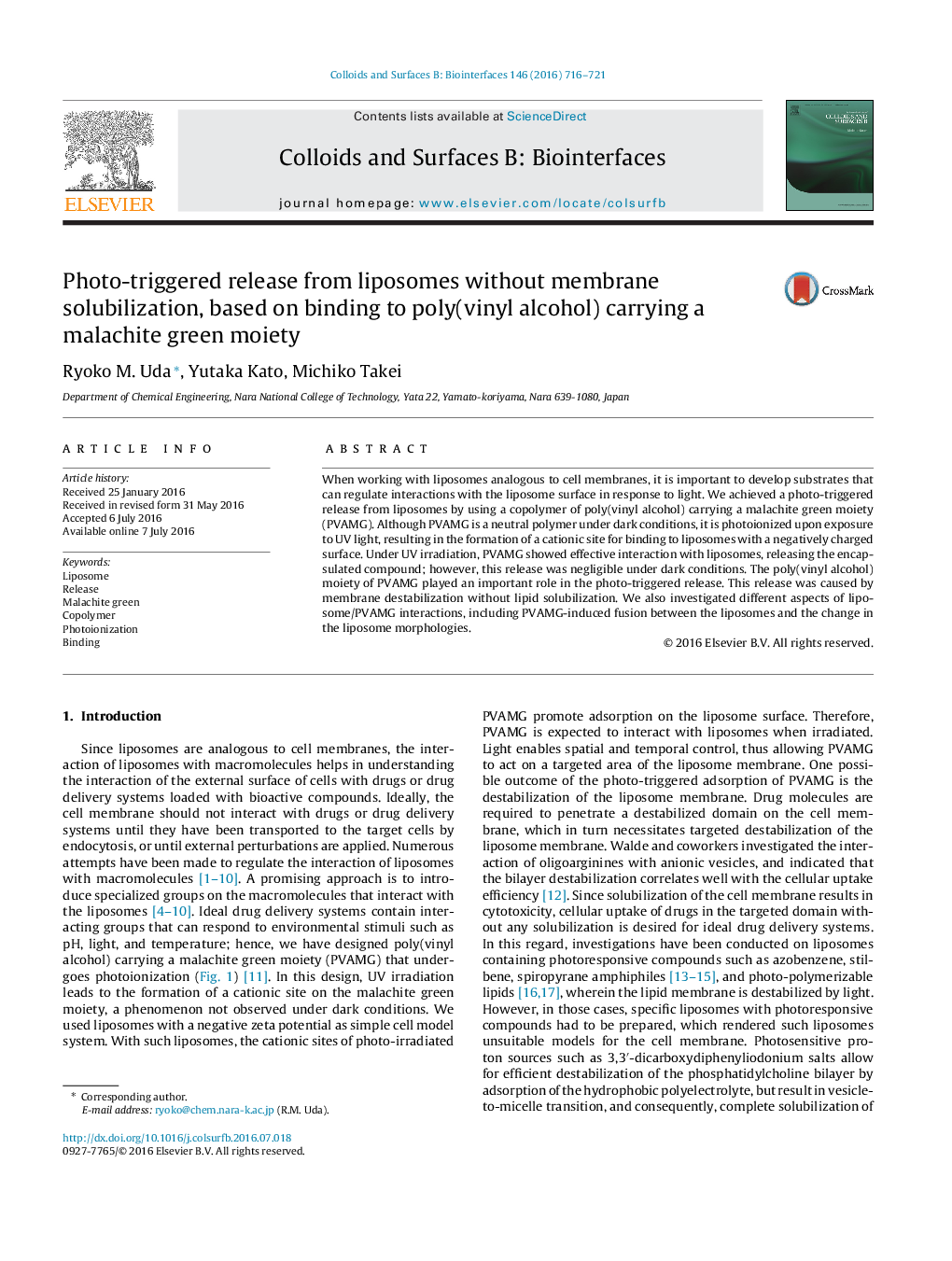| کد مقاله | کد نشریه | سال انتشار | مقاله انگلیسی | نسخه تمام متن |
|---|---|---|---|---|
| 598802 | 1454258 | 2016 | 6 صفحه PDF | دانلود رایگان |
• Malachite green copolymer affords cationic binding site for liposomes by irradiation.
• The irradiation of photoionizable copolymer promotes the release from liposomes.
• The release is due to an increase in permeability of liposome membrane.
When working with liposomes analogous to cell membranes, it is important to develop substrates that can regulate interactions with the liposome surface in response to light. We achieved a photo-triggered release from liposomes by using a copolymer of poly(vinyl alcohol) carrying a malachite green moiety (PVAMG). Although PVAMG is a neutral polymer under dark conditions, it is photoionized upon exposure to UV light, resulting in the formation of a cationic site for binding to liposomes with a negatively charged surface. Under UV irradiation, PVAMG showed effective interaction with liposomes, releasing the encapsulated compound; however, this release was negligible under dark conditions. The poly(vinyl alcohol) moiety of PVAMG played an important role in the photo-triggered release. This release was caused by membrane destabilization without lipid solubilization. We also investigated different aspects of liposome/PVAMG interactions, including PVAMG-induced fusion between the liposomes and the change in the liposome morphologies.
Figure optionsDownload as PowerPoint slide
Journal: Colloids and Surfaces B: Biointerfaces - Volume 146, 1 October 2016, Pages 716–721
